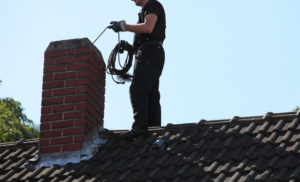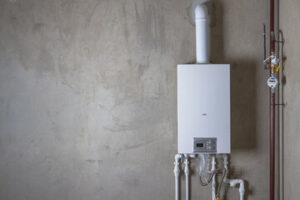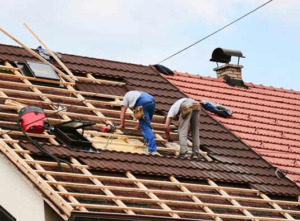Chimney Sweep Charleston SC use special tools to make an inspection and clean your chimney. These include brushes, long rods, and safety gear like a dust collection vacuum.
Historically, boys between the ages of six and twelve were sold to chimney sweeps by their parents or found in orphanages. They were forced to climb narrow, hot flues; this is where the expression “to light a fire under someone” came from.

Soot is a thick black substance that can be difficult to clean. This is a byproduct of burning fossil fuels and organic material and can be quite damaging to surfaces that it comes in contact with if not dealt with quickly. It can also be incredibly dangerous if it is inhaled and can cause respiratory problems. It is very important to regularly have a professional chimney sweep remove soot from the fireplace and chimney.
Chimney sweeping involves the removal of soot, creosote, and other debris from the interior of the chimney flue and lining. Chimney sweeps use a variety of tools to do this including a broom chimney brush, metal brushes, ladders, tape, mirror, dirt mask or full mask, and a shop vacuum with a filter specifically designed for soot removal.
One of the most common reasons that homeowners call a chimney sweep is because of excessive soot buildup. This can occur when a chimney is used frequently or if the wood used for burning is not properly seasoned. The oil in the wood that is not completely burned up during the burning process will be carried up with the smoke and will mix with moisture and other chemicals, forming creosote, which settles on the inside of the chimney.
Oftentimes, creosote can be removed by simply brushing it away with a wire brush. However, if the creosote is very heavy and layered on, it may be necessary to use other methods for cleaning. If this is the case, a chimney sweep will use a ruff fixed on a cable with a heavy object attached from below. This is similar to the plumbing device that is used to break through clogged sewer pipes.
Another method that a chimney sweep may use is to spray soot remover inside the chimney and scrub it with a wire brush. Chimney soot remover is a special chemical that is designed to break down creosote and other deposits. When it is applied correctly by a qualified professional, this product can be very effective. If the soot remover is improperly used or if it is left in the chimney too long, it can actually make the problem worse.
Creosote Removal
Creosote is a natural byproduct of wood-burning fires, but heavy creosote buildup can cause chimney damage and lead to dangerous conditions. The good news is that it’s very easy to avoid creosote problems by using seasoned or kiln-dried wood, keeping up with regular chimney sweeping appointments, and making sure that your fireplace system is in proper working condition.
The best way to prevent creosote is to use a product like Meeco’s Red Devil Creosote Destroyer every third time you burn a fire in your fireplace. This powdered remover coats the walls of your chimney liner and prevents future creosote from sticking while also breaking down existing creosote deposits. It’s available in a 5-pound tub and should last for one season of burning fires.
When a chimney is not cleaned regularly, the deposits that form on the interior of your flue and in the chimney can become so thick that they can block the smoke from venting freely through the system. The most dangerous type of creosote is called glazed creosote, which has the appearance of a thick sugar-candy shell on the flue walls and is very difficult to remove.
If you notice that your chimney’s interior walls have a dark, shiny, tar-like coating that looks like it has been applied with a paintbrush, it is a sign of serious creosote buildup and should be cleaned by a professional chimney sweep immediately. Chimney sweeps have specialized brushes and vacuum systems that can safely remove this buildup without removing your chimney liner.
There are also chemical creosote removers that can be purchased at most hardware stores, but these products are not as effective and will take a little more work than simply brushing or using a rotary loop tool. In addition, they are usually caustic and can stain masonry surfaces, so they should be used only as a last resort.
It’s important to note that if you have a heavy creosote buildup, even the specialized tools and chemicals of a chimney sweep may be unable to remove it completely. A CSIA-certified chimney technician will have the equipment, knowledge, and training to get your fireplace system back into safe working order.
Animal Removal
Animals getting trapped inside chimneys can cause costly damage to the home and even pose a health risk. It’s essential that homeowners have the ability to identify and resolve these issues as quickly as possible to protect themselves and their families. Chimney sweeps are well trained in animal removal, have the appropriate tools and know how to handle these critters safely. They also have access to field service apps and CRM software solutions that enable them to digitally structure customer information, manage work orders, schedule appointments and dispatch technicians in a more efficient manner.
The first step in the animal removal process involves determining whether an animal is still alive or not. This can be done by listening for chirps or other sounds and by observing any fallen debris on the ground near the fireplace. If the animal is living, it may make chirping noises and struggle to escape the chimney. A live animal can be much more dangerous than a dead one as it may have rabies or other diseases that will spread to people in your home.
If an animal is alive, a chimney sweep will try to encourage it to use its established path to exit the chimney. Providing a rope or branches within the chimney to climb on will help to speed up the removal process by motivating the animal to take the route it has already established for itself. The goal is to prevent the animal from attempting to find its own way out as this could make it more difficult and painful.
Chimney sweeps must be careful to avoid disturbing the animal’s nest as it may contain eggs and young animals. This is particularly important in cases involving raccoons who can carry rabies and roundworms. It is also a good idea to install a chimney cap and top-seal damper to prevent animals from entering the home in the future.
It is vital that chimney sweeps have the right tools to handle these types of tasks. The main tool is a chimney brush which looks like a giant bottle brush and has metal bristles on it. In addition, chimney sweeps will have a mask and face shield to minimize direct contact with contaminants and other irritants. They will also wear protective clothing and put down a drop cloth to decrease soot levels inside the home.
Preparation
Whether it is a power sweep or not, chimney sweeps use a variety of tools and techniques to clean your fireplace. Their main tool resembles a giant bottle brush and they wear a mask, goggles, and shop vac to decrease the amount of soot that is blown into your home during this process. While they are working in your home, you may want to remove children’s toys from the area and move any furniture that could be easily damaged by a dust or dirt laden brush. You also want to make sure that pets are kept away from the work area as they can get upset by the noises and equipment.
Before your sweep arrives you should ensure that your firebox is completely empty of logs and grate. Also, you should remove any tripping hazards from the floor around the fireplace. Any decorative elements on the mantle should be moved away from the fireplace as well. This will help to speed up the sweeping process and protect your cherished items from accidental damage.
It is a good idea to shut your fireplace and flue 24 hours before the appointment and leave them closed until after the chimney sweep leaves. This is because the ash from your fire will need time to cool down before it is safe for them to pick up. Additionally, the chimney will need to be cool in order for the sweep to use their power sweep rods to remove the creosote from the flue walls.
If you have pets, it is a good idea to keep them secured in another room or outside until the chimney sweep has left your home. This will prevent them from becoming stressed by the noise and movement of the chimney sweeping equipment. It will also keep them safe from the hazard of animals and birds being displaced by the chimney sweep’s efforts.
Finally, it is important to make a clear path from the front door to the chimney so that the sweep can bring in the necessary equipment. You will want to clear a space that is large enough for the sweep’s ladder, broom, and other tools. You should also remove any tripping hazards from the chimney area to avoid them being accidentally kicked or knocked off during the cleaning process.

